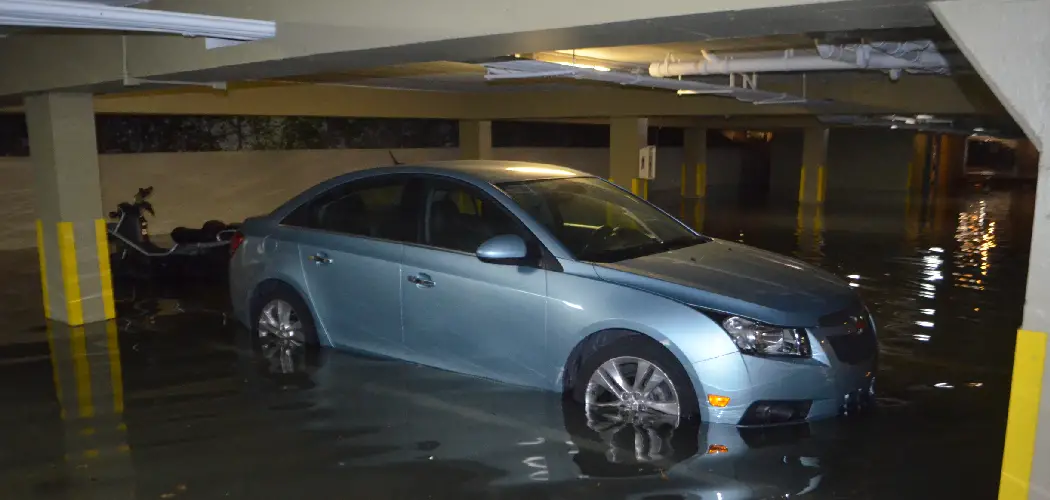Preventing your garage from flooding is essential for protecting your belongings and maintaining the structural integrity of your home. Flooding can occur due to heavy rain, poor drainage, or snowmelt, leading to water damage, mold growth, and other costly issues. In this comprehensive guide, we’ll explore effective strategies and practical tips on how to stop garage from flooding.
To effectively stop your garage from flooding, a multi-faceted approach is necessary, combining preventative measures with immediate actions. Key strategies include ensuring proper grading around your home to direct water away from the foundation, installing and maintaining effective drainage systems like French drains or trench drains, and using weatherproofing techniques such as sealing cracks and applying waterproof coatings to walls and floors.
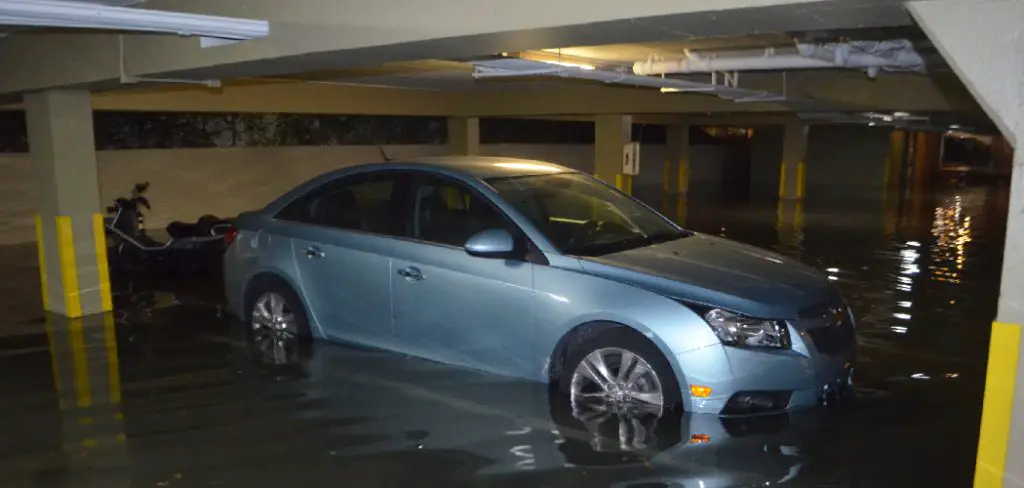
Additionally, installing a sump pump can provide an extra layer of protection by automatically removing excess water. Regularly cleaning gutters and downspouts to prevent clogs and ensuring they extend away from the garage also helps. By proactively addressing these aspects, you can significantly reduce the risk of flooding, safeguarding your garage and its contents.
The Common Problem of Garage Flooding
Garage flooding is a widespread issue faced by many homeowners, particularly those residing in areas prone to heavy rains or seasonal snowmelt. The problem often stems from several contributing factors, such as improper drainage, insufficient grading around the property, and aging or inadequate infrastructure. When water is not effectively diverted away from the garage, it can seep through the foundation, enter through gaps and cracks, or even flow in through underperforming drainage systems.
The repercussions of garage flooding are not just limited to water damage; it can also lead to mold and mildew growth, jeopardizing both the health of the occupants and the condition of stored items. Additionally, frequent flooding can weaken the foundation and walls, resulting in long-term structural issues. Therefore, understanding the common causes and taking preventive measures is crucial for homeowners seeking to protect their garage and its contents from the devastation of flooding.
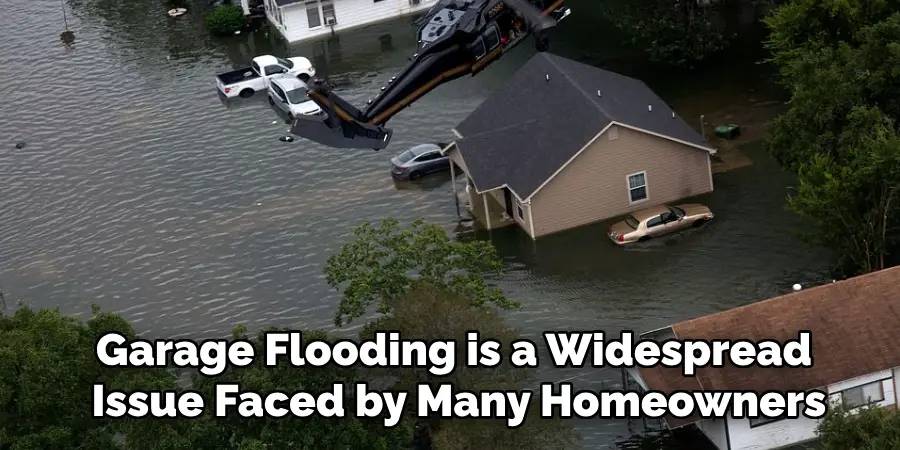
Importance of Addressing Garage Flooding
Addressing garage flooding is crucial not only for the preservation of your property but also for the health and well-being of your household. When a garage is consistently exposed to water ingress, the resulting damage extends beyond mere inconvenience. Water damage can lead to costly repairs, erode the structural integrity of your home, and depreciate its overall value.
Furthermore, persistent moisture creates a fertile environment for mold and mildew growth, which can have serious health implications, including respiratory issues and allergies for the inhabitants. Additionally, many garages are often used as storage spaces for valuable or sentimental items, tools, and vehicles, all of which can suffer irreversible damage if exposed to flooding. By proactively addressing and preventing garage flooding, you mitigate these risks, safeguarding your investments and ensuring a healthier living environment.
Understanding the Causes of Garage Flooding
To effectively prevent garage flooding, it’s essential to understand the various causes that contribute to this common issue. One primary cause is poor grading around the property, where the ground slopes towards the garage rather than away from it. This improper slope directs rainwater and runoff towards your garage, increasing the likelihood of water infiltration. Another significant factor is inadequate or clogged drainage systems, which prevent water from being channeled away efficiently. Gutters and downspouts that fail to extend far enough from the house can also contribute to pooling water near the garage foundation.
Structural issues such as cracks and gaps in the garage floor, walls, or foundation can provide entry points for water, especially during heavy rains or snowmelt. Aging infrastructure, including worn-out weather stripping and seals around doors and windows, can further exacerbate the problem by allowing water to seep in. Additionally, inadequate design or placement of stormwater drainage systems can lead to water accumulating around your property.
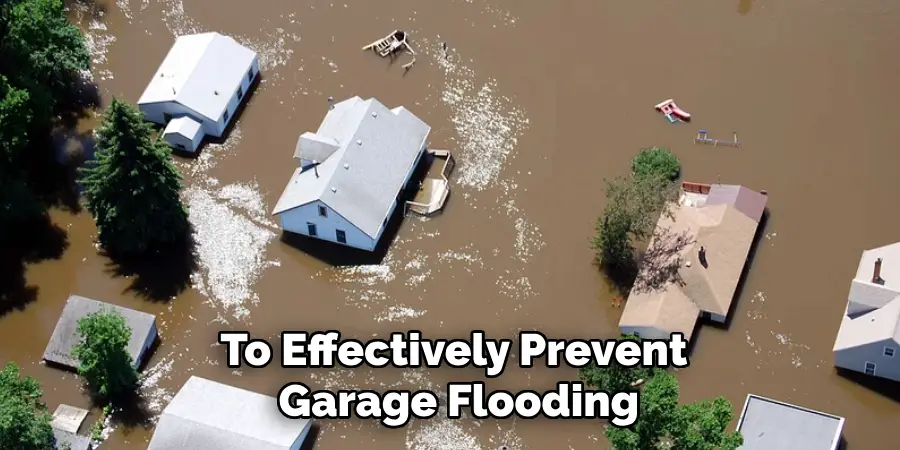
Excessive groundwater levels, often caused by prolonged periods of rain or poor soil drainage, can also result in water pressure building up around your garage, forcing water through any available openings. Understanding these underlying causes is the first step in developing an effective strategy to mitigate the risk of garage flooding. By addressing these issues proactively, homeowners can better protect their garages from water damage and its associated consequences.
Cracks or Gaps in the Garage Structure
Cracks or gaps in the garage structure are common culprits that can lead to flooding, especially during severe weather conditions. These vulnerabilities often appear in the floor, walls, or foundation of the garage, providing pathways for water to infiltrate. Over time, fluctuating temperatures, settling of the foundation, and natural wear and tear can contribute to the formation of these cracks and gaps. In particular, expansion and contraction cycles in concrete due to seasonal temperature changes can exacerbate this issue.
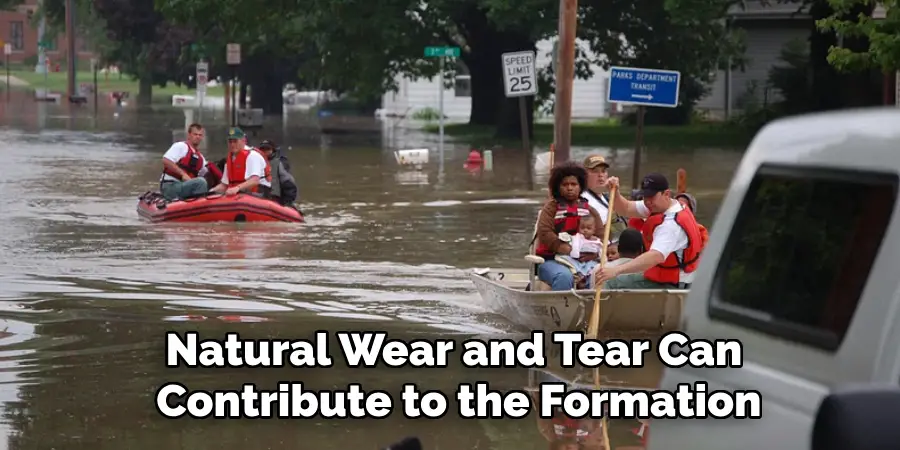
To mitigate this risk, regular inspection of the garage structure is essential. Homeowners should look for visible signs of cracks or gaps and take prompt action to seal them effectively. Using high-quality sealants or epoxy can help to waterproof these fissures, thereby preventing water ingress. For larger or more severe cracks, professional repairs may be necessary to ensure a durable and long-lasting solution.
Additionally, addressing underlying structural issues such as ground settling or poor construction practices can prevent further cracking. Implementing proper maintenance routines and promptly addressing any new cracks as they appear will help maintain the integrity of the garage and reduce the risk of flooding. By proactively managing these structural vulnerabilities, homeowners can better safeguard their garages from the damaging effects of water infiltration.
Assessing the Risk of Garage Flooding
Assessing the risk of garage flooding involves a thorough evaluation of both internal and external factors that contribute to water ingress. Start by examining the landscape around your property, noting the gradient and any potential water flow paths towards the garage. Properties situated at the bottom of a hill or in low-lying areas are especially vulnerable to runoff accumulation. Next, inspect the condition and functionality of your drainage systems, including gutters, downspouts, and storm drains. Ensure that they are clear of debris and extend far enough from the foundation to direct water away effectively.
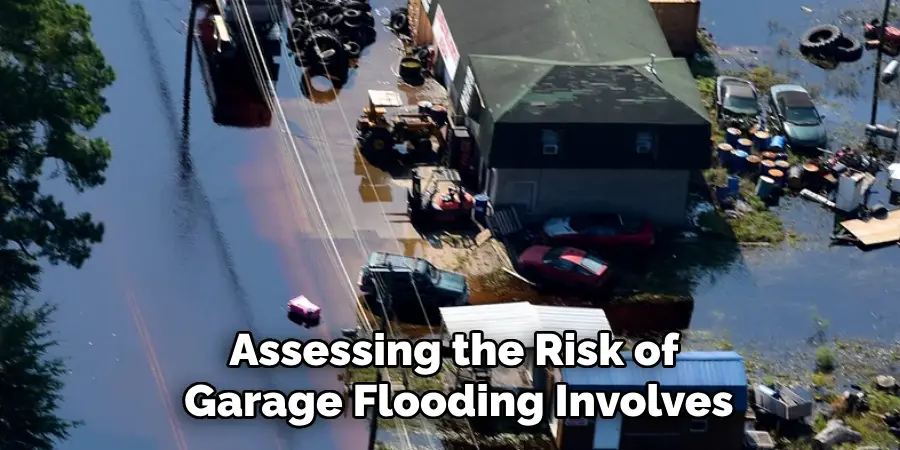
Internally, scrutinize the garage structure for any signs of wear and tear. Pay close attention to the foundation, walls, and floor for existing cracks, gaps, or other vulnerabilities. Test the integrity of weather stripping and seals around doors and windows to ensure they are in good condition. Consider whether there have been previous flooding incidents or water damage inside the garage, as past problems often indicate recurring issues. Additionally, assess the proximity of groundwater levels and the soil’s drainage characteristics, especially if your area experiences frequent heavy rain or snowmelt.
Homeowners should also consider regional weather patterns and climate projections, as these can influence the likelihood of future flooding events. By comprehensively evaluating these factors, you can develop a better understanding of your garage’s flood risk and implement effective preventive measures to mitigate potential damage.
Identifying Vulnerable Areas in and Around the Garage
Identifying vulnerable areas in and around the garage is crucial for effective flood prevention. Start by examining the perimeter of the garage, particularly where the walls meet the ground. Check for any signs of erosion or water pooling, as these can indicate potential points of entry for water. Pay special attention to the area around the garage door, as gaps or inadequately sealed thresholds are common sources of water ingress.
Inspect the interior of the garage, focusing on the floor and lower parts of the walls. Look for any visible cracks or damp spots, which may be symptomatic of existing water intrusion. Additionally, check for any signs of rust or corrosion on metal items stored in the garage, as these can also be indicators of moisture problems.
Next, evaluate the condition of the garage roof, especially if it’s attached to the main house. Ensure there are no leaks or damaged shingles that could allow water to seep in. Inspect gutters and downspouts connected to the garage to confirm they are free from obstructions and properly directing water away from the structure.
Furthermore, consider the landscape surrounding the garage. The ground should ideally slope away from the garage to divert water flow. If this is not the case, you may need to carry out regrading or installation of proper drainage systems, such as French drains or swales, to manage surface water effectively.
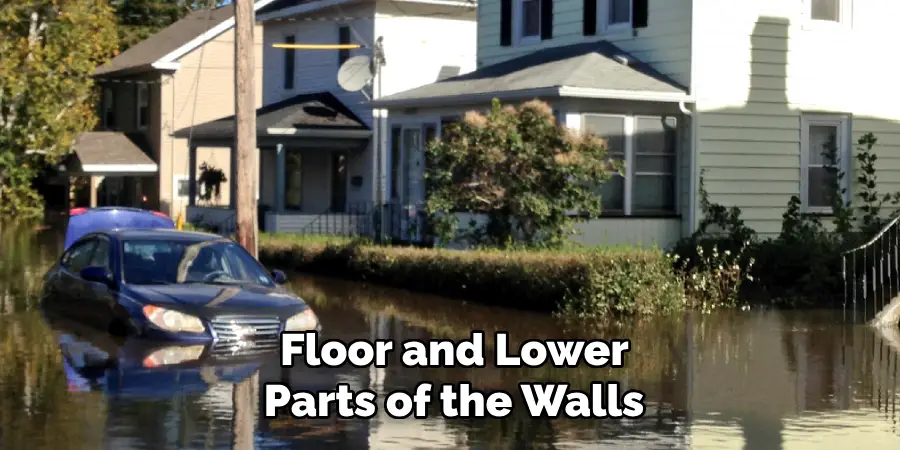
Finally, examine the overall integrity of seals around windows, doors, and other openings. Weather stripping and caulking should be intact and in good condition to prevent water from seeping through during heavy rains. By thoroughly identifying these vulnerable areas, you can take the necessary steps to fortify your garage against flooding and minimize the risk of water damage.
10 Methods How to Stop Garage from Flooding
1. Install a French Drain System
A French drain is a trench filled with gravel and a perforated pipe that redirects water away from your garage. To install a French drain, start by digging a trench around the perimeter of your garage where water tends to accumulate. Line the trench with landscape fabric to prevent soil from clogging the drain, then add a layer of gravel. Place a perforated PVC pipe in the trench, ensuring it slopes away from the garage to guide water toward a drainage area or storm sewer. Cover the pipe with more gravel and wrap the fabric over the top. Finally, fill the trench with soil and sod. This system effectively channels excess water away from your garage, preventing flooding.
2. Improve Surface Grading
Proper grading around your garage ensures that water flows away from the structure instead of toward it. To improve surface grading, assess the slope of the ground around your garage. The ground should slope away from the garage at a gradient of at least 1 inch per foot for the first 6 to 10 feet. If the grading is insufficient, add soil to build up the area near the foundation and create a gradual slope. Ensure the soil is compacted to prevent erosion. This method directs surface water away from your garage, reducing the risk of flooding.
3. Install Gutter and Downspout Extensions
Gutters and downspouts are essential for directing roof runoff away from your garage. Ensure your gutters are clean and free of debris to allow proper water flow. Install downspout extensions to carry water at least 6 to 10 feet away from the foundation. Downspout extensions can be flexible, rigid, or even buried underground to connect to a French drain system. By diverting roof runoff away from your garage, you reduce the volume of water that could potentially cause flooding.
4. Seal Cracks in the Garage Floor and Walls
Cracks in the garage floor and walls can allow water to seep in, leading to flooding. Inspect your garage for any cracks or gaps and seal them with appropriate materials. Use concrete patching compounds or epoxy to fill cracks in the floor. For cracks in the walls, use masonry sealant or caulk. Ensure the area is clean and dry before applying the sealant, and follow the manufacturer’s instructions for the best results. Sealing cracks prevents water from infiltrating your garage, protecting it from flooding.
5. Install a Sump Pump
A sump pump is a powerful tool for preventing flooding in areas prone to water accumulation. Install a sump pump in a sump pit located in the lowest part of your garage. The pump activates when the water level in the pit reaches a certain point, pumping the water out to a safe drainage area away from your garage. Choose a sump pump with a battery backup to ensure it operates during power outages. Regularly check and maintain the sump pump to ensure it functions correctly. This method effectively removes excess water, preventing it from flooding your garage.
6. Apply Waterproof Coatings to Walls and Floors
Waterproof coatings provide an additional barrier against moisture infiltration. Apply a waterproof epoxy or masonry sealant to the walls and floor of your garage. Clean and dry the surfaces thoroughly before application, and follow the manufacturer’s instructions for the best results. Waterproof coatings create a protective layer that prevents water from seeping through the concrete, reducing the risk of flooding. This method is particularly effective for garages in areas with high groundwater levels or frequent heavy rains.
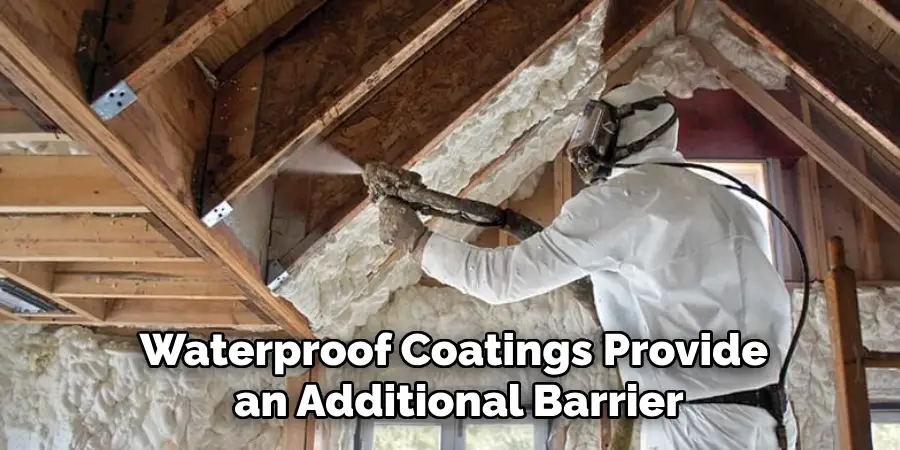
7. Install Trench Drains at Garage Entrances
Trench drains, also known as channel drains, are installed at the entrance of your garage to capture and redirect water before it enters. These drains consist of a grated trench that collects surface water and channels it to a drainage system or storm sewer. To install a trench drain, dig a trench at the garage entrance, place the drain channel, and connect it to an appropriate drainage outlet. Cover the drain with a grate to prevent debris from clogging it. Trench drains effectively prevent water from flowing into your garage, protecting it from flooding.
8. Create a Dry Well
A dry well is an underground structure that collects and disperses water, allowing it to seep into the ground slowly. To create a dry well, dig a large hole at a low point near your garage where water tends to accumulate. Line the hole with landscape fabric and fill it with gravel or a pre-made dry well unit. Connect the dry well to your drainage system, such as downspouts or French drains, to direct water into it. Cover the top with soil and sod. This method provides an effective solution for managing excess water and preventing it from flooding your garage.
9. Use Sandbags or Flood Barriers
For immediate protection during heavy rains or flooding events, use sandbags or flood barriers. Place sandbags along the garage door and other vulnerable areas to create a barrier that prevents water from entering. Flood barriers, such as inflatable or modular barriers, can also be used for quick and temporary protection. Ensure the barriers are properly positioned and sealed to maximize their effectiveness. While this method is not a long-term solution, it provides essential protection during emergencies.
10. Install Backflow Prevention Valves
Backflow prevention valves prevent sewage or stormwater from backing up into your garage during heavy rain or flooding. These valves are installed in your sewer or drainage lines and allow water to flow out but not back in. To install a backflow prevention valve, hire a professional plumber to assess your system and place the valve in the appropriate location. Regularly inspect and maintain the valve to ensure it functions correctly. This method protects your garage from water and sewage backups, reducing the risk of flooding.
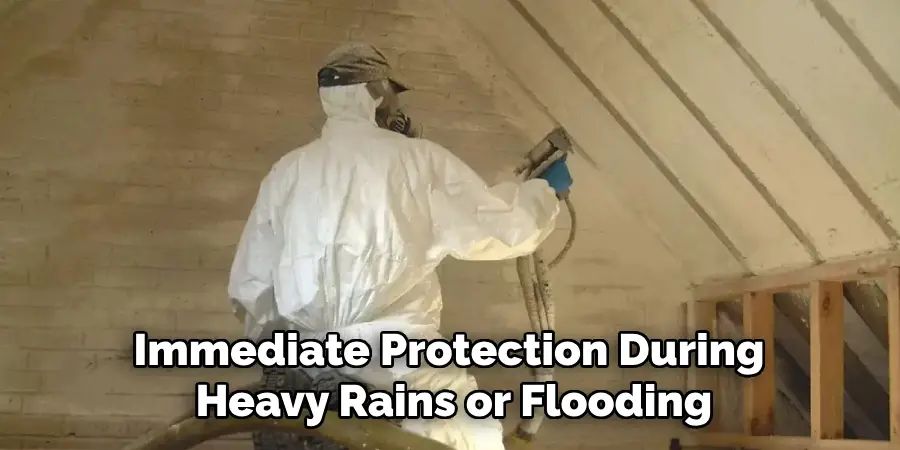
Conclusion
Implementing these measures can significantly reduce the risk of flooding in your garage. Regular maintenance, such as cleaning gutters and inspecting for cracks, is crucial to ensure your flood prevention systems remain effective. By addressing potential water entry points and utilising tools like sump pumps and backflow prevention valves, you can protect your garage from water damage and preserve the integrity of your property.
Taking proactive steps to manage surface water and improve drainage will provide peace of mind, knowing that your garage is well-protected against flooding. Thanks for reading, and we hope this has given you some inspiration on how to stop garage from flooding!

